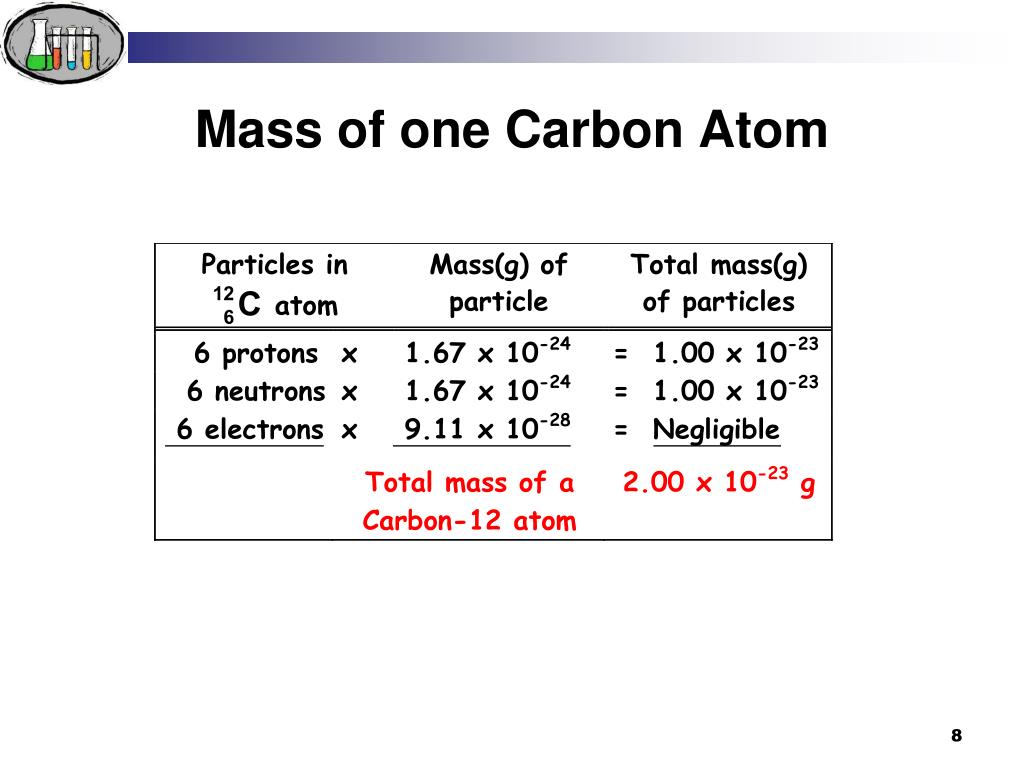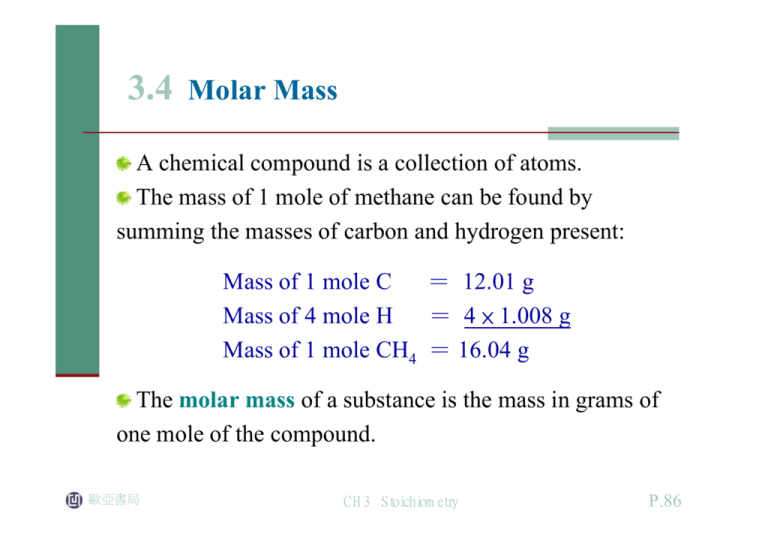



Elemental hydrogen exists as a diatomic molecule, H 2. Here are some further examples: The mass of a hydrogen atom is 1.0079 amu the mass of 1 mol of hydrogen atoms is 1.0079 g.

This is not the same as molecular mass, which is the mass of a single molecule of well-defined isotopes. Use the molar masses of each atom together with the number of atoms in the formula and add together.
#Carbon molar mass 12 how to#
This is how to calculate molar mass (average molecular weight), which is based on isotropically weighted averages. The atomic weights used on this site come from NIST, the National Institute of Standards and Technology. Since each mole is 126.737 grams, you multiply 3.5 mols by 126.737 grams, giving you 443.58 grams. This gives a molar mass of 126.737 g/mol. This site explains how to find molar mass. First, you can calculate the molar mass of FeCl2 by adding the molar masses of Fe (55.845 g/mol) and 2 atoms of Cl (2 times (35.446 g/mol). One mole of carbon still has 6.022 × 10 23 carbon atoms, but 98.89 of those atoms are carbon-12, 1.11 are carbon-13, and a trace (about 1 atom in 10 12 ) are carbon-14. Protons are relatively heavy particles with a charge of 1+ and a mass of 1.0073 amu. The molar mass of naturally occurring carbon is different from that of carbon-12 and is not an integer because carbon occurs as a mixture of carbon-12, carbon-13, and carbon-14. This compound is also known as Lactose or Sucrose or Maltose. An amu is defined as exactly 1/12 of the mass of a carbon-12 atom and is equal to 1.6605 \times 10 24 g. The reason is that the molar mass of the substance affects the conversion. The mass of one atom is usually expressed in atomic mass units (amu), which is referred to as the atomic mass. To complete this calculation, you have to know what substance you are trying to convert. Using the chemical formula of the compound and the periodic table of elements, we can add up the atomic weights and calculate molecular weight of the substance.Ī common request on this site is to convert grams to moles. To find out the percentage of Carbon, ('molar mass of carbon') / ('molar mass of ethanol')xx100 The percentage of Carbon is: 24.0 g/mol -: 46.0 g/mol xx 100 52.2 of Carbon Note: The molar mass. The next step is to find out what are the percentages of each element. The percentage by weight of any atom or group of atoms in a compound can be computed by dividing the total weight of the atom (or group of atoms) in the formula by the formula weight and multiplying by 100. 2 xx 12.0 + 6 xx 1.0 + 1 xx 16.0 46.0 g/mol is the molar mass of ethanol. If the formula used in calculating molar mass is the molecular formula, the formula weight computed is the molecular weight. These relative weights computed from the chemical equation are sometimes called equation weights. The formula weight is simply the weight in atomic mass units of all the atoms in a given formula.įormula weights are especially useful in determining the relative weights of reagents and products in a chemical reaction. So, in our example, carbon has a molar mass of 12.01 grams per mole. When calculating molecular weight of a chemical compound, it tells us how many grams are in one mole of that substance. For example, if you want to find the molar mass of carbon, you would find the atomic mass of carbon on the periodic table, and this is equal to the molar mass in grams per mole. ).In chemistry, the formula weight is a quantity computed by multiplying the atomic weight (in atomic mass units) of each element in a chemical formula by the number of atoms of that element present in the formula, then adding all of these products together.įinding molar mass starts with units of grams per mole (g/mol).


 0 kommentar(er)
0 kommentar(er)
